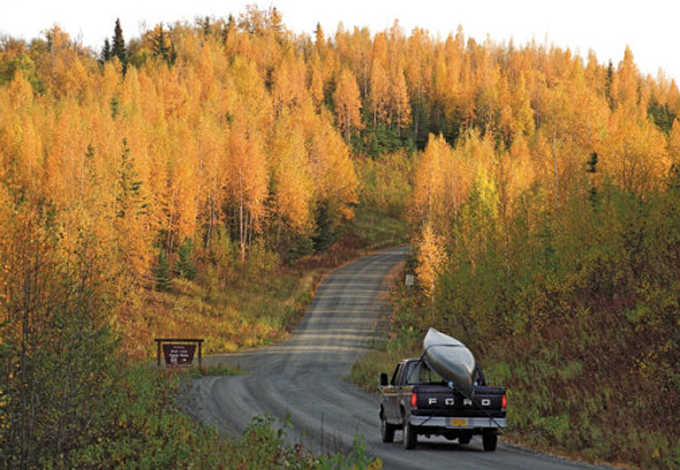The Kenai National Wildlife Refuge is proposing regulations that will moderate vehicle use, legalize edible plant collection and increase restrictions on camping and containment of attractants, among others.
The proposed rule that would revise its Public Use Regulations is aimed, according to its drafters, at protecting resources and maximizing public safety and access.
The U.S. Fish and Wildlife Service is seeking public feedback on the rule in a 60-day open comment period ending July 20, 2015.
The refuge will host two public meetings where community members may ask questions about the proposed rule and address their questions and concerns, said Fish and Wildlife Service Alaska Region Public Affairs Specialist Andrea Medeiros.
Refuge regulations are not often revised, Medeiros said.
The proposed amendments and new rules align with the Kenai National Wildlife Refuge Comprehensive Conservation Plan that was published in 2010, Medeiros said. Development of the plan involved significant public input and identified long-term strategies for managing the refuge, she said.
Primary issues, including public use, habitat and resource management are addressed in the comprehensive plan through practices that the proposed rule will further develop, Medeiros said.
Sections of the 24-page proposal align with the regulations of other jurisdictions, which the public adheres to in different areas of the refuge. A proposal for reducing “negative human-bear interactions,” targets the confluence of the Kenai and Russian river, called the Russian River-Kenai River Special Management Area.
“Managing wildlife attractants to reduce negative human-bear interactions are a key are part of a multi-agency effort, which includes the U.S. Forest Service, the Alaska Department of Fish and Game, the Alaska Department of Natural Resources, the Fish and Wildlife Service, Cook Inlet Region, Inc., and the Kenaitze Indian Tribe,” said refuge manager Andy Loranger. “The proposed rule would establish regulations for storing and handling food and retained fish in the area, as well as use of camping facilities and camp fires.”
Under the Regulatory Flexibility Act, the U.S. Fish and Wildlife Service has to provide an economic impact estimate for small businesses in the area, in addition to the open comment period, according to the proposal.
“This proposed rule would impact visitor use for wildlife dependent recreation on the refuge,” according to the proposed rule. “Modifying the visitor use regulations would have small incremental changes on total visitor use days associated with particular actives.”
The refuge estimates that visitor use associated with aircraft, motorboats and collection of natural resources may increase while camping may decline slightly.
“We estimate that the overall change in recreation use-day would represent less than one percent of the average recreation use days on the refuge,” according to the proposal. “Due to the negligible change in average recreation days, this proposed rule would have a minimal effect on these small businesses.”
The harvesting of edible plant matter such as mushrooms and berries is common within the refuge, but is technically illegal, said Refuge Entomologist Matt Bowser in a previous Clarion interview.
However, it has been an accepted practice if taken for personal use, Bowser said. The proposed rule would make the refuge’s policy legal, he said.
The Service will consider all public comments received when preparing the final rule, which also will be published in the Federal Register prior to new regulations being adopted, Medeiros said.
Reach Kelly Sullivan at kelly.sullivan@peninsulaclarion.com

